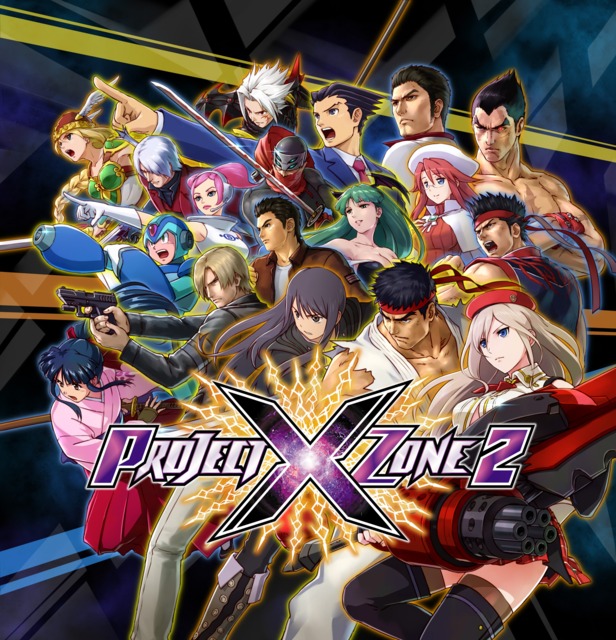Project X Zone 2 and the Never-Ending Dimension
Of all the Niche JRPG titles out there that anyone expected to get a sequel, Project X Zone was not one of them. A 3DS title that’s the continuation of a Japan-exclusive PS2 crossover game, Project X Zone had a myriad of problems that resulted in a lot of warranted negative feedback. Despite the backlash, it somehow sold enough copies overseas for Bandai to seek to make a sequel, aptly titled Project X Zone 2. While the game doesn’t do a lot to mix up its gameplay and story from the first title, it certainly does enough to stand well above it.
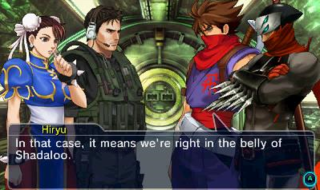
The story for Project X Zone 2 is incredibly convoluted if for no reason other than that it’s reliant on knowing what happened in the aforementioned Japan-exclusive title, Namco X Capcom. Reiji Arisu and Xiaomu are agents at “Shinra,” a secret government organization that deals with the supernatural, which for them tends to be time and space anomalies along with a little bit of universe hopping. Reiji and Xiaomu are chasing after the terrorist group “Ouma,” that’s constantly trying to mess with the various timelines and universes that connect the world. This time around it involves a series of gold chains that have been appearing in various worlds and also reviving various villains and monsters wherever they show up. It’s now up to the two Shinra agents to stop Ouma from harvesting the power of these chains for their schemes with the help of the warriors they meet in each new dimension.
Story is obviously not very important here, anything that happens will never impact any of the games that the various characters are pulled from, and X Zone 2 knows this and runs with it. Every character is simplified down into whatever tropes best represent them, and that’s probably the best way to go about it. With such a simplified approach to story more effort was put into the game’s writing, which results in a lot of good one-liners and gags. The game feels like a weird action-comedy at times, and that’s when its writing is at its strongest.
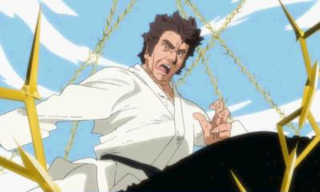
The roster for the game spans both popular and niche titles from across various Namco, Capcom, Sega, and Nintendo franchises. If you’ve ever wanted to see Chris Redfield and Jill Valentine of Resident Evil fame tag team with Hibana from the PS2 title Nightshade then you’re in luck. If you have no idea who that is, then congrats, you’re probably in the same boat as most of the people who will pick up the game and not recognize many of the characters. There's a lot of them though, including Ryu, Ken, and Chun-Li from Street Fighter, Yuri and Flynn from Tales of Vesperia, and even Ryo Hazuki from Shenmue gets his chance in the crossover spotlight. One of the best inclusions by far though has to be the Sega Saturn advert mascot, Segata Sanshiro, a martial artist who wants you to play the Sega Saturn that he will beat you half to death to get you to do it. Every line, every gag, everything that he is involved in will somehow relate back to one of the few commercials he was in. That charm is carried through with every single character, and it’s the casts' witty writing that can almost carry you through the game’s poorly-paced story.
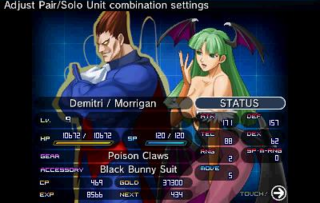
The plot does a whole lot of not-going-anywhere, slowed down by the need to visit every dimension that every character is from at least once, regardless of how little impact it has to the overall story. Bosses are consistently recycled and somehow also consistently escape. It speaks volumes when the first sentence to go through your mind at seeing a boss appear is “here we go again.” It actually got to the point where I felt like leaving the game and putting it down for good. X Zone 2 is 42 chapters long (not counting prologues) and in reality it could have probably been about 25 or so. If you can manage to muster your way through the boring slog of a center the game has to the end, you’re given some very satisfying final levels, but the struggle to get there doesn’t really feel worth it.
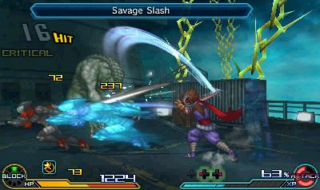
The first X Zone also had this problem, but it was coupled with gameplay that the parts outside of the story also feel long and boring, which is where X Zone 2 puts in a lot of changes to speed things up. The actual game part of X Zone 2 can best be described as a combination of a turn-based tactics game and a fighting game. Units move across a grid-like board where they can take turns attacking each other. When you initiate combat you’re brought to a screen reminiscent of something like Street Fighter, and you can hit the attack button in combination with D-pad directions to chain various combos together. The higher your combo chain, the bigger your exp and gold reward. You can forgo mashing out all your attacks every chance you get to let them charge, which will make them stronger on the next turn. You can also add to your combos by calling in support from a solo-unit, or requesting the aid of another unit next to your attacking one. The whole thing sounds really complex, but it’s actually not. Getting good at chaining your commands together is the easy part, with learning how to perfectly time them and landing criticals being the apex of the skill ceiling. One of the biggest problems for the original X Zone was that basic enemies could take several full combos to the face before going down, but thankfully damage scales pretty well in X Zone 2 as long as you keep your characters well equipped.
The voice track for X Zone 2 is in Japanese, it’s not much of a surprise since the first game was also only JP audio as well. It fits well enough, but the soundtrack is where the audio really shines. Much of X Zone 2’s music is remixes of popular tracks from other games. Certain tracks do not live up to their original versions due to the 3DS’ limitations, but the music team did a good job of unifying many different styles of music into a cohesive soundtrack. Whenever a particular character starts their turn their theme will play until you swap to the next character over.
Project X Zone 2 is an average game, with an above average concept. It’s interesting and flashy combat and funny dialogue just barely carry it through its molasses-speed story, a story that’s hard to get into if you’re not familiar with its prequels. While it’s a definitive improvement over the first X Zone, its poor pacing holds it back and makes it hard to finish when multiple times it feels like “this should be the end,” and it’s not.
